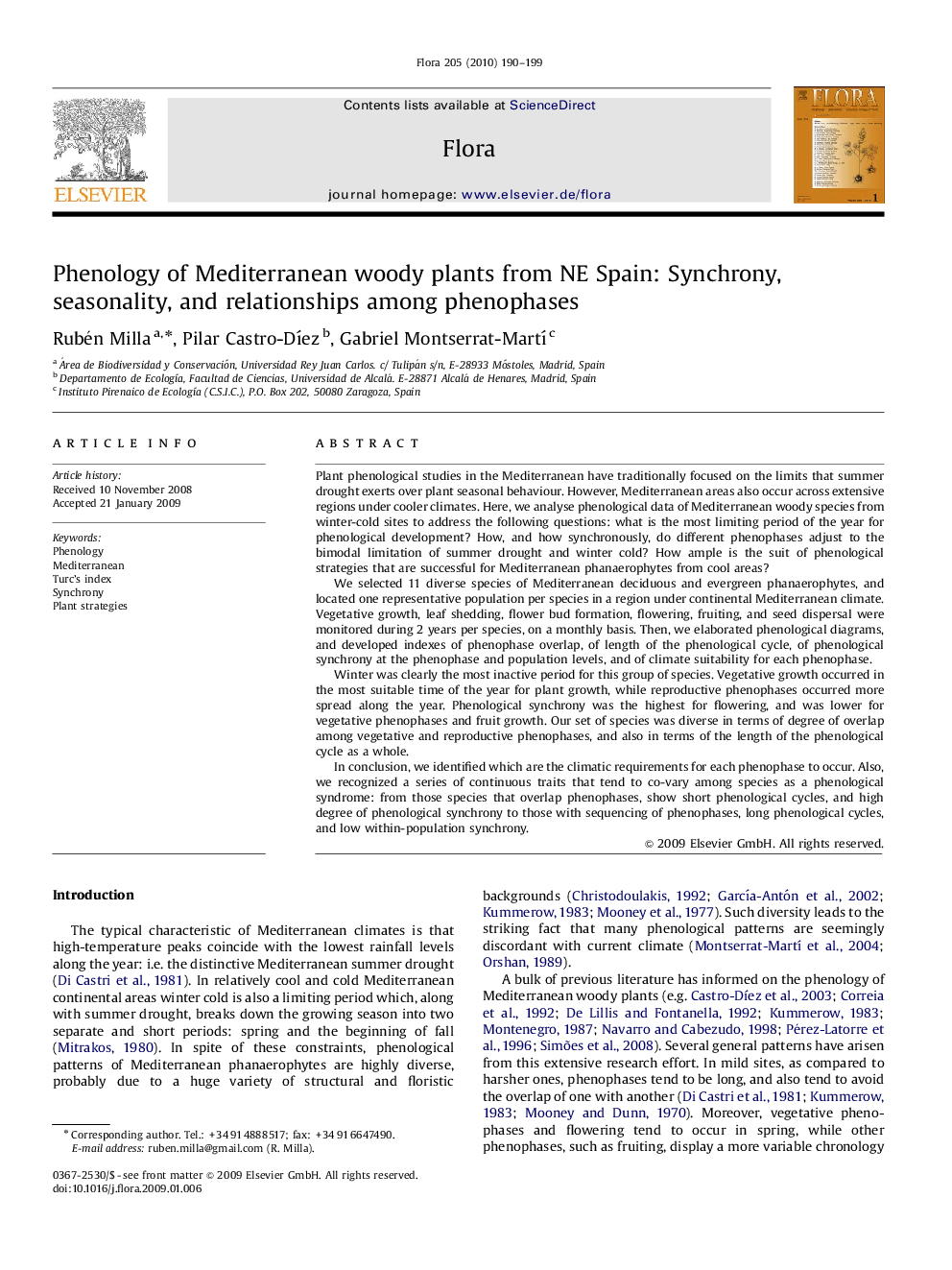| Article ID | Journal | Published Year | Pages | File Type |
|---|---|---|---|---|
| 2180132 | Flora - Morphology, Distribution, Functional Ecology of Plants | 2010 | 10 Pages |
Plant phenological studies in the Mediterranean have traditionally focused on the limits that summer drought exerts over plant seasonal behaviour. However, Mediterranean areas also occur across extensive regions under cooler climates. Here, we analyse phenological data of Mediterranean woody species from winter-cold sites to address the following questions: what is the most limiting period of the year for phenological development? How, and how synchronously, do different phenophases adjust to the bimodal limitation of summer drought and winter cold? How ample is the suit of phenological strategies that are successful for Mediterranean phanaerophytes from cool areas?We selected 11 diverse species of Mediterranean deciduous and evergreen phanaerophytes, and located one representative population per species in a region under continental Mediterranean climate. Vegetative growth, leaf shedding, flower bud formation, flowering, fruiting, and seed dispersal were monitored during 2 years per species, on a monthly basis. Then, we elaborated phenological diagrams, and developed indexes of phenophase overlap, of length of the phenological cycle, of phenological synchrony at the phenophase and population levels, and of climate suitability for each phenophase.Winter was clearly the most inactive period for this group of species. Vegetative growth occurred in the most suitable time of the year for plant growth, while reproductive phenophases occurred more spread along the year. Phenological synchrony was the highest for flowering, and was lower for vegetative phenophases and fruit growth. Our set of species was diverse in terms of degree of overlap among vegetative and reproductive phenophases, and also in terms of the length of the phenological cycle as a whole.In conclusion, we identified which are the climatic requirements for each phenophase to occur. Also, we recognized a series of continuous traits that tend to co-vary among species as a phenological syndrome: from those species that overlap phenophases, show short phenological cycles, and high degree of phenological synchrony to those with sequencing of phenophases, long phenological cycles, and low within-population synchrony.
